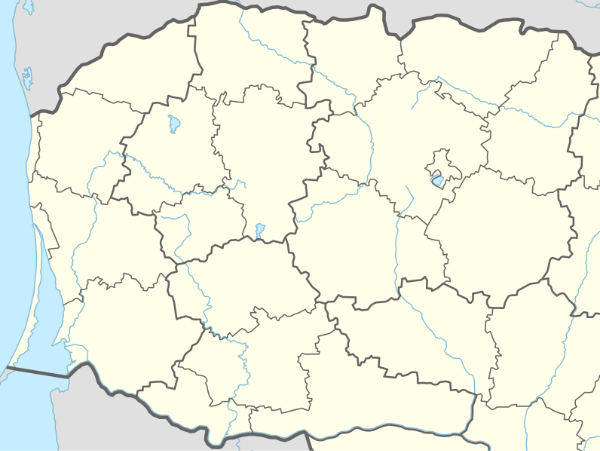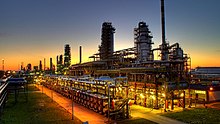
North Sea oil is a mixture of hydrocarbons, comprising liquid petroleum and natural gas, produced from petroleum reservoirs beneath the North Sea.

Hibernia is an oil field in the North Atlantic Ocean, approximately 315 kilometres (196 mi) east-southeast of St. John's, Newfoundland, Canada, in 80 m of water.

Mining in Japan is minimal because Japan does not possess many on-shore mineral resources. Many of the on-shore minerals have already been mined to the point that it has become less expensive to import minerals. There are small deposits of coal, oil, iron and minerals in the Japanese archipelago. Japan is scarce in critical natural resources and has been heavily dependent on imported energy and raw materials. There are major deep sea mineral resources in the seabed of Japan. This is not mined yet due to technological obstacles for deep sea mining.

Orlen Lietuva is a subsidiary of the Polish PKN Orlen and it owns the Mažeikiai oil refinery as well as the oil-processing plant in Lithuania. It is the only oil refinery in the Baltic States.
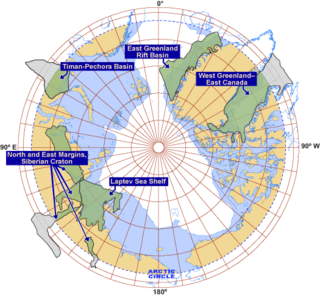
Exploration for petroleum in the Arctic is expensive and challenging both technically and logistically. In the offshore, sea ice can be a major factor. There have been many discoveries of oil and gas in the several Arctic basins that have seen extensive exploration over past decades but distance from existing infrastructure has often deterred development. Development and production operations in the Arctic offshore as a result of exploration have been limited, with the exception of the Barents and Norwegian seas. In Alaska, exploration subsequent to the discovery of the Prudhoe Bay oilfield has focussed on the onshore and shallow coastal waters.
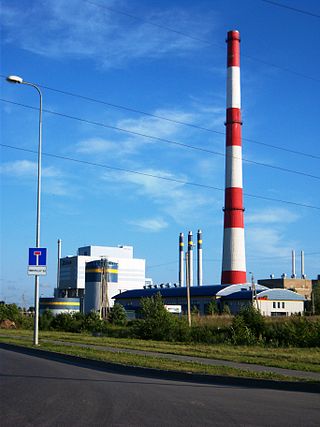
The Klaipėda Geothermal Demonstration Plant is a geothermal heating plant in Klaipėda, Lithuania, constructed during the late 1990s and early 2000s. It was the first geothermal heating plant in the Baltic Sea region. Its purpose was to reduce carbon dioxide, sulfur dioxide, nitrogen oxide, and particulate emissions in the area, as well as to reduce Lithuania's dependence on foreign energy sources. The plant supplies district heating to the city. Construction was financed by a loan from the World Bank (US$5.9 million) and a grant from the Global Environment Facility (US$6.9 million). The Danish state company Dansk Olie og Naturgas provided technical support, and Enterprise Geoterma served as the implementing agency. The total cost of the plant was US$19.5 million.
The East Midlands Oil Province, also known as the East Midlands Petroleum Province, covers the petroliferous geological area across the north-eastern part of the East Midlands of England that has a few small oil fields. The largest field in the province is the Welton oil field, the second largest onshore oil field in the UK.

The oil and gas industry plays a central role in the economy of the United Kingdom. Oil and gas account for more than three-quarters of the UK's total primary energy needs. Oil provides 97 per cent of the fuel for transport, and gas is a key fuel for heating and electricity generation. Transport, heating and electricity each account for about one-third of the UK's primary energy needs. Oil and gas are also major feedstocks for the petrochemicals industries producing pharmaceuticals, plastics, cosmetics and domestic appliances.
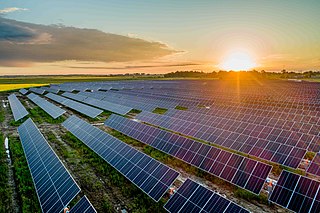
Lithuania is a net energy importer. In 2019 Lithuania used around 11.4 TWh of electricity after producing just 3.6 TWh.

Cairn India was an Indian oil and gas exploration and production company, headquartered in Gurgaon, India. The company was merged with Vedanta Limited.
The oil industry in Poland began at Bóbrka Field in 1853, followed by the first refinery in 1854. Poland was the third most productive region in the world in 1900. It now has only a small, mostly state-owned component, with production from its Permian Basin in the west, small and very old fields in the Carpathians in the south, and offshore in the Baltic Sea. For natural gas the country is almost completely dependent on legacy pipelines from the former Soviet Union.
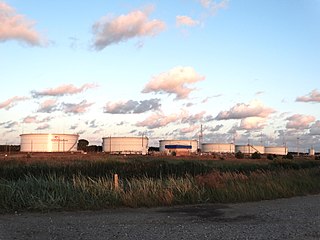
Būtingė oil terminal is an oil terminal near the village of Būtingė in northern Lithuania. Planned, designed and implemented by Fluor Corporation, it is a part of ORLEN Lietuva. Būtingė has been in operation since July 1999, and is the first major petroleum project that Lithuania implemented after it attained independence in 1990. The facilities can accommodate crude oil exports of 8 million tons and imports to the extent of 6 to 8 million tons.
The Galata gas field is a natural gas field located on the continental shelf of the Black Sea approximately 25km Southeast of Varna, Bulgaria. The field was the first to be developed offshore Bulgaria, and at peak production provided more than 16% of Bulgaria's domestic gas needs, the platform and associated infrastructure is still the only production facility located in the Bulgarian Black Sea.
The Vilkyčiai oil field is an oil field located in the Gargždai Oil Block, Šilutė District Municipality, Lithuania. Formed within Minija river basin.

Vilkyčiai is a village in the south of the Klaipėda County in western Lithuania. The village was part of the Klaipėda Region and ethnographic Lithuania Minor.
The Diegliai oil field is an oil field located in the Gargždai Oil Block, Šilutė District Municipality.

The Šilalė oil field is an oil field located in the Gargždai Oil Block, Šilutė District Municipality.
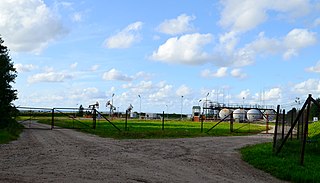
The Svencelė oil field, also known as the Sakučiai-5 oil field, is an oil field in the Gargždai Oil Block, Klaipėda District Municipality. Svencelė oil field is located 900 m from Svencelė Swamp and peat fields and bordering Svencelė Meadows Nature Reserve in the west.

